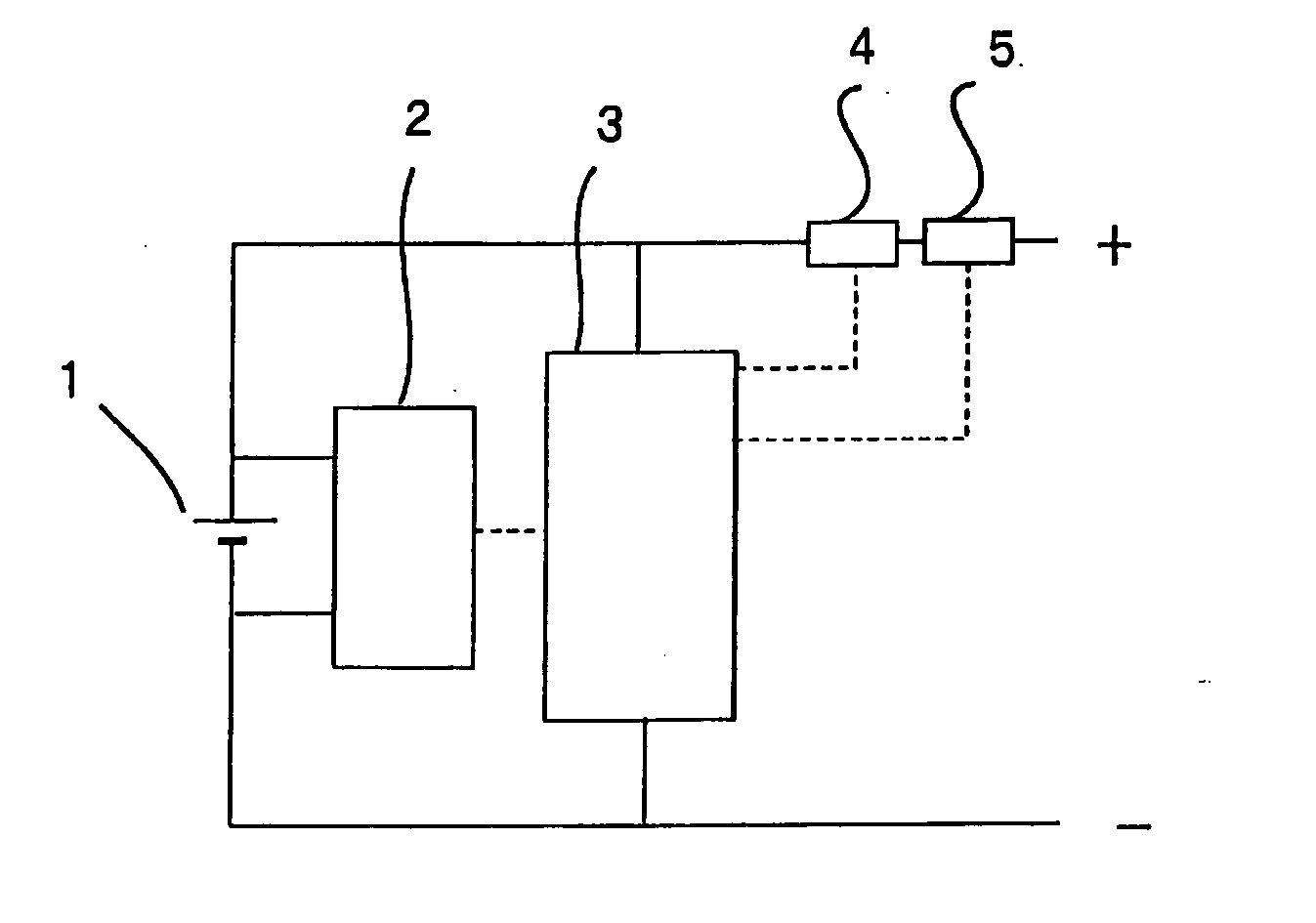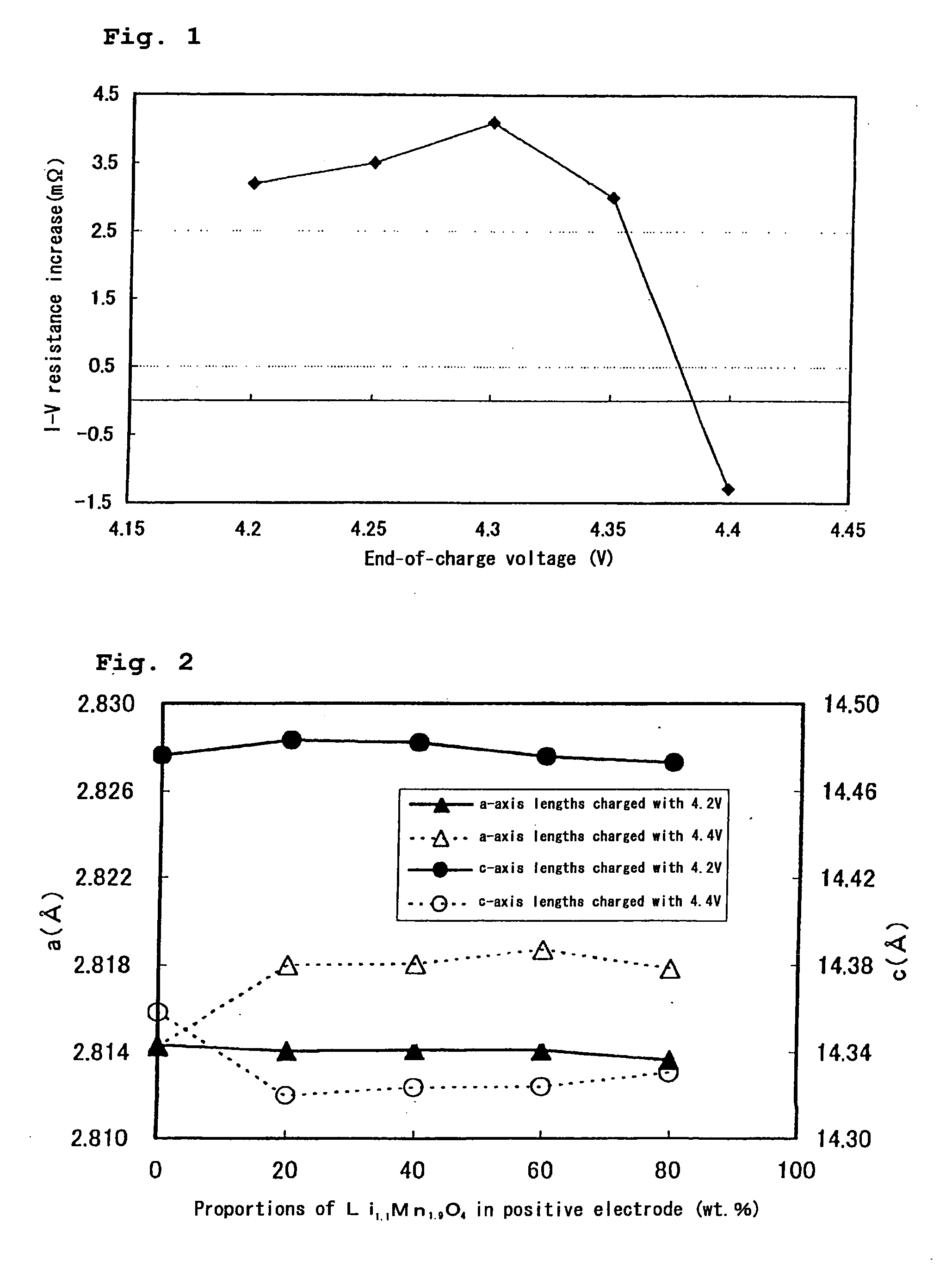Method of charging and discharging a non-aqueous electrolyte secondary battery
a non-aqueous electrolyte and secondary battery technology, applied in the direction of secondary cell servicing/maintenance, cell components, electrochemical generators, etc., can solve the problems of deteriorating battery performance and the method disclosed in the patent publication cannot achieve sufficient cycle performance, and achieve good battery cycle performance.
- Summary
- Abstract
- Description
- Claims
- Application Information
AI Technical Summary
Benefits of technology
Problems solved by technology
Method used
Image
Examples
experiment 1
Example 1
Preparation of Positive Electrode
[0030] Li1.15Ni0.4Co0.3Mn0.3O2, powder and Li1.1Mn1.9O4 powder, serving as positive electrode active materials, were mixed at a weight ratio of 7:3 (lithium-transition metal composite oxide: lithium-manganese composite oxide), and then the resultant powder mixture was mixed with artificial graphite serving as a conductive agent so that the weight ratio of the powder mixture to the artificial graphite became 9:1, to thus prepare a positive electrode mixture. The prepared positive electrode mixture was mixed with a N-methyl-2-pyrrolidone (NMP) solution containing 5 weight % polyvinylidene fluoride (PVdF) as a binder agent so that the solid weight ratio became 95:5 (positive electrode mixture: binder agent), to thus prepare a slurry. The resultant slurry was applied onto both sides of a 20 μm-thick aluminum foil by doctor blading and then vacuum dried at 150° C. for 2 hours. A positive electrode was thus prepared.
Preparation of Negative El...
example 2
[0042] Each of the tests was carried out in the same manner as in Example 1 except that the end-of-charge voltage was set at 4.40 V. The results are also shown in Table 1 and FIG. 1.
experiment 2
[0047] Various positive electrodes were prepared with varying of the mixture ratio of the lithium-transition metal composite oxide to the lithium-manganese composite oxide, to prepare non-aqueous electrolyte secondary batteries. The batteries were charged and discharged with an end-of-charge voltage of 4.2 V or 4.4 V. Thereafter, the positive electrodes were taken out, and the lattice constants of the lithium-transition metal composite oxide in each positive electrode were determined using a powder X-ray diffraction analysis.
PUM
| Property | Measurement | Unit |
|---|---|---|
| end-of-charge voltage | aaaaa | aaaaa |
| voltage | aaaaa | aaaaa |
| end-of-charge voltage | aaaaa | aaaaa |
Abstract
Description
Claims
Application Information
 Login to View More
Login to View More - R&D
- Intellectual Property
- Life Sciences
- Materials
- Tech Scout
- Unparalleled Data Quality
- Higher Quality Content
- 60% Fewer Hallucinations
Browse by: Latest US Patents, China's latest patents, Technical Efficacy Thesaurus, Application Domain, Technology Topic, Popular Technical Reports.
© 2025 PatSnap. All rights reserved.Legal|Privacy policy|Modern Slavery Act Transparency Statement|Sitemap|About US| Contact US: help@patsnap.com



